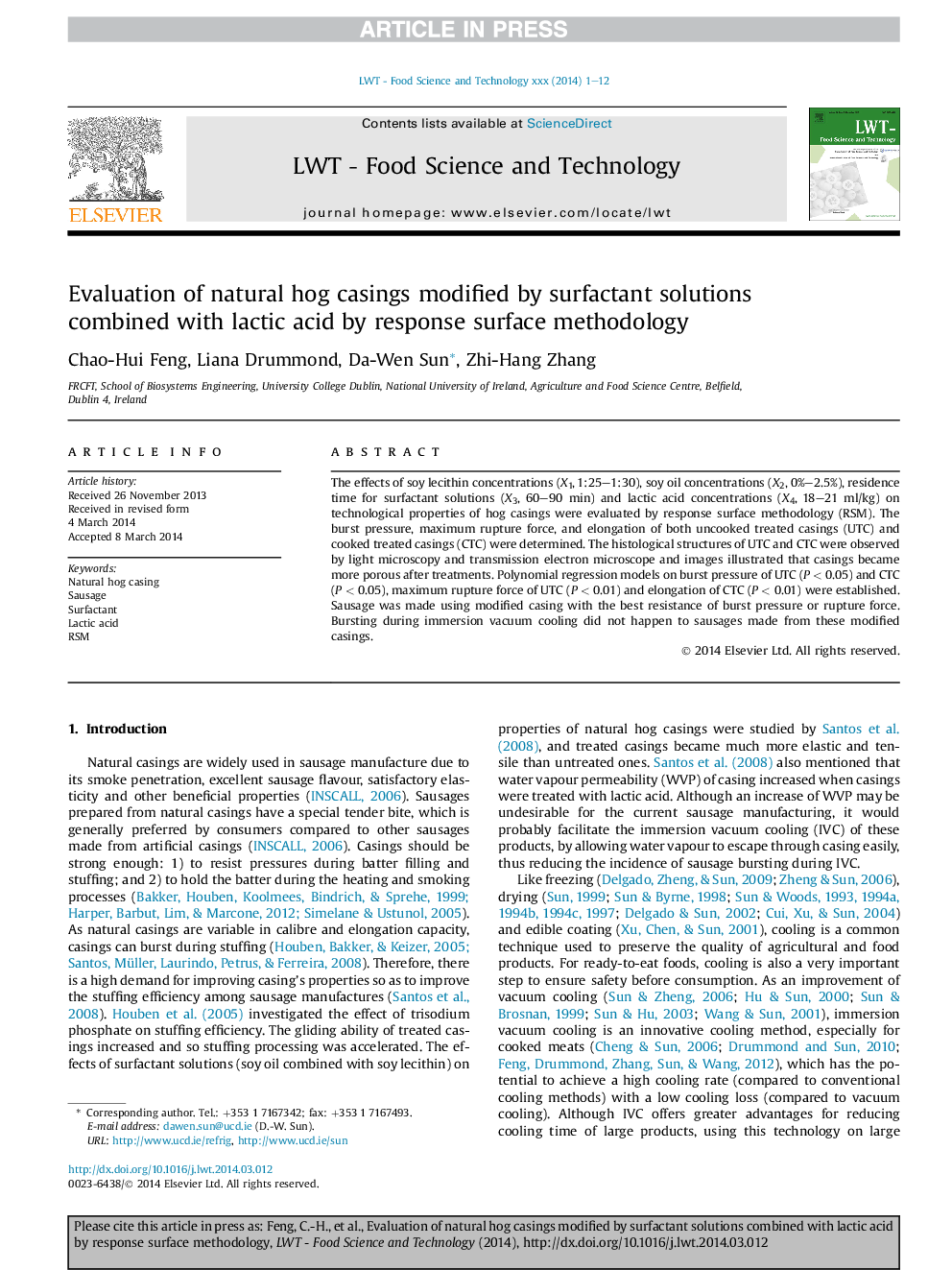| Article ID | Journal | Published Year | Pages | File Type |
|---|---|---|---|---|
| 6403227 | LWT - Food Science and Technology | 2014 | 12 Pages |
Abstract
The effects of soy lecithin concentrations (X1, 1:25-1:30), soy oil concentrations (X2, 0%-2.5%), residence time for surfactant solutions (X3, 60-90Â min) and lactic acid concentrations (X4, 18-21Â ml/kg) on technological properties of hog casings were evaluated by response surface methodology (RSM). The burst pressure, maximum rupture force, and elongation of both uncooked treated casings (UTC) and cooked treated casings (CTC) were determined. The histological structures of UTC and CTC were observed by light microscopy and transmission electron microscope and images illustrated that casings became more porous after treatments. Polynomial regression models on burst pressure of UTC (PÂ <Â 0.05) and CTC (PÂ <Â 0.05), maximum rupture force of UTC (PÂ <Â 0.01) and elongation of CTC (PÂ <Â 0.01) were established. Sausage was made using modified casing with the best resistance of burst pressure or rupture force. Bursting during immersion vacuum cooling did not happen to sausages made from these modified casings.
Keywords
Related Topics
Life Sciences
Agricultural and Biological Sciences
Food Science
Authors
Chao-Hui Feng, Liana Drummond, Da-Wen Sun, Zhi-Hang Zhang,
